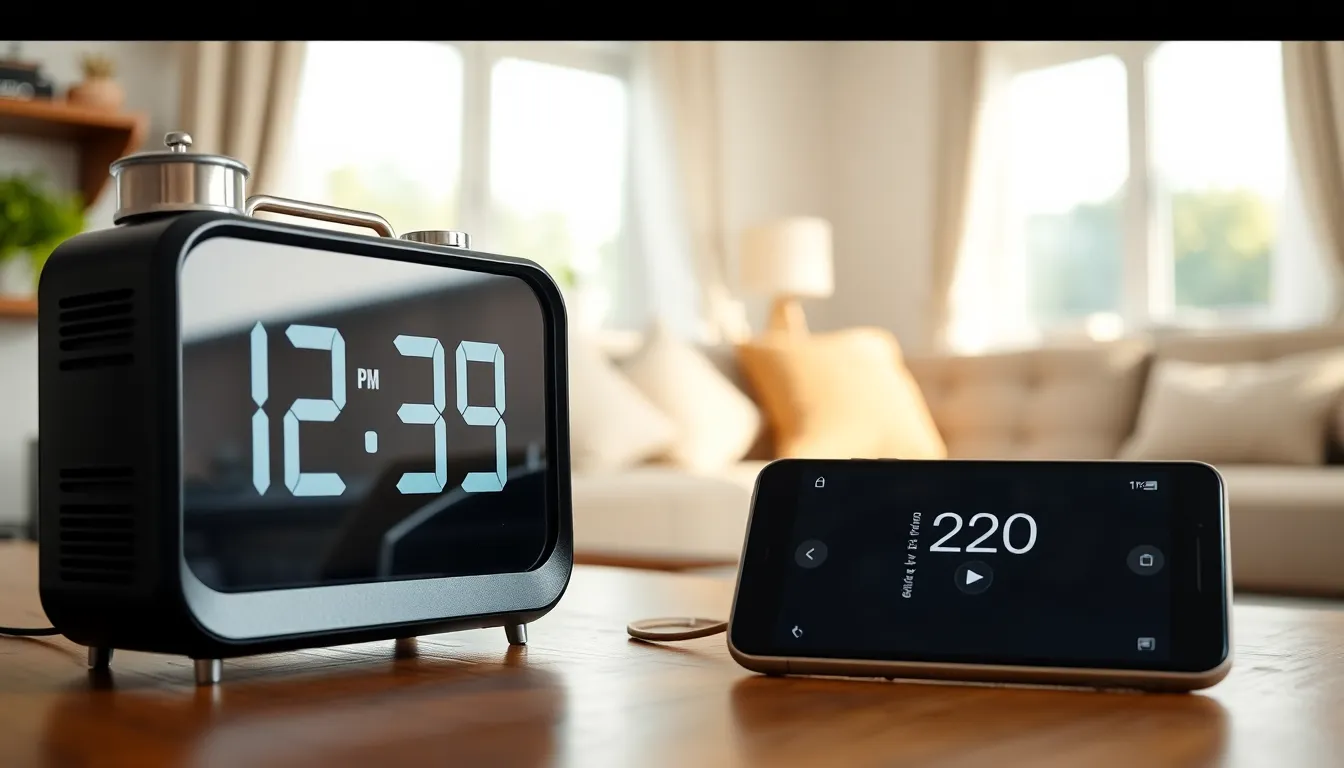Time management plays a crucial role in daily life, and knowing how long until a specific hour can help prioritize tasks effectively. As the clock ticks, many find themselves wondering just how much time they have left before an important deadline or appointment. This simple question—how long until 2 PM today—can be surprisingly impactful in organizing one’s day.
Whether it’s planning a meeting, preparing for a call, or just fitting in a quick break, understanding the time remaining until 2 PM can enhance productivity. In this article, readers will discover quick methods to calculate the time left and tips to make the most of those precious minutes leading up to the afternoon.
Table of Contents
ToggleUnderstanding Time Calculation
Understanding how to calculate time until 2 PM assists in effective time management and prioritization. With just a few straightforward methods, individuals can determine the time remaining to plan their day efficiently.
The Importance of Knowing the Time
Knowing the current time and the time remaining until 2 PM is essential for effective scheduling. It enables individuals to allocate sufficient time for tasks, plan breaks, or prepare for upcoming meetings. Utilizing this time awareness can significantly enhance productivity. For instance, if only 30 minutes remain until 2 PM, individuals may focus on completing quick tasks rather than starting larger projects.
Different Time Zones
Time zones play a crucial role in determining the accurate time until 2 PM. Coordinating across multiple time zones requires awareness of the local time differences. For example, if it’s 12 PM in New York (Eastern Time), it’s only 9 AM in Los Angeles (Pacific Time), meaning the time until 2 PM varies based on location. Understanding these differences ensures proper planning for calls or meetings across various regions, minimizing scheduling conflicts.
How to Calculate Time Until 2 PM Today

Calculating the time remaining until 2 PM today can be straightforward. This section outlines methods using a clock and a smartphone.
Using a Clock
- Identify the current hour and minute displayed on the clock.
- Calculate the hours left until 2 PM by subtracting the current hour from 2.
- If the current minute is greater than zero, deduct one hour from the total and add 60 minutes to the current minute for accuracy.
- Combine the hours and remaining minutes to determine the total time until 2 PM.
Using a Smartphone
- Open the clock or timer app on the smartphone.
- Check the current time displayed on the home screen or within the app.
- Utilize the built-in alarm function to set an alarm for 2 PM.
- Observe the time remaining until the alarm goes off, which will show the exact duration until 2 PM.
- For some devices, using voice assistants can provide a quick verbal response, such as “How long until 2 PM?” for immediate clarity on the remaining time.
Practical Applications
Understanding the time remaining until 2 PM serves various practical applications in daily life. Efficient time management enhances productivity and facilitates smoother operations throughout the day.
Planning Your Day
Planning the day effectively hinges on knowing how much time remains until 2 PM. He can allocate specific time blocks for tasks by understanding the urgency of completing assignments. She can prioritize crucial activities, such as attending meetings or finishing projects, based on the time left. For example, if one hour remains until 2 PM, allocating that time towards concentrated work ensures important deadlines are met. Additionally, he can schedule breaks to recharge, enhancing focus when approaching the afternoon.
Managing Meetings and Appointments
Managing meetings and appointments effectively relies on tracking the time until 2 PM. She can use this information to arrive punctually, preventing delays in important discussions. If a meeting starts at 1:30 PM, acknowledging that only 30 minutes remain aids in preparing key points and gathering necessary materials. He can also coordinate with colleagues across different time zones by verifying the time difference, ensuring everyone is on the same page. This awareness fosters seamless communication and minimizes scheduling conflicts, creating a more efficient work environment.
Tips for Effective Time Management
Effective time management techniques help individuals maximize productivity. Implementing strategies such as prioritizing tasks and setting timers enhances focus and efficiency.
Prioritizing Tasks
Prioritizing tasks involves identifying what’s most important and urgent. Consider these steps for effective prioritization:
- List tasks: Write down all tasks for the day.
- Categorize: Assign each task a level of urgency and importance.
- Rank: Organize tasks based on their priority level.
- Limit: Focus on completing three to five top-priority tasks daily.
- Review: Regularly reassess priorities as new tasks emerge throughout the day.
Setting Timers and Reminders
- Use timers: Implement time blocks for work sessions, such as the Pomodoro Technique (25 minutes of focused work followed by a 5-minute break).
- Set reminders: Use digital tools, such as smartphone apps, to schedule notifications for important tasks and meetings.
- Schedule breaks: Establish reminders for short breaks to recharge and maintain productivity.
- Adjust as needed: Modify timers and reminders based on personal work habits and task requirements.
- Evaluate: Track progress regularly to improve focus and make necessary adjustments for future tasks.
Understanding how long until 2 PM today is more than just a simple calculation. It plays a vital role in effective time management and productivity. By knowing the remaining time, individuals can better prioritize their tasks and make the most of each minute leading up to that hour.
Utilizing straightforward methods to determine the time left can enhance daily planning. Whether using a clock or smartphone, quick calculations allow for efficient scheduling of meetings and breaks.
In today’s fast-paced environment, being mindful of time not only improves personal efficiency but also fosters better communication and coordination, especially when working across different time zones. Embracing these time management strategies can lead to a more organized and productive day.









